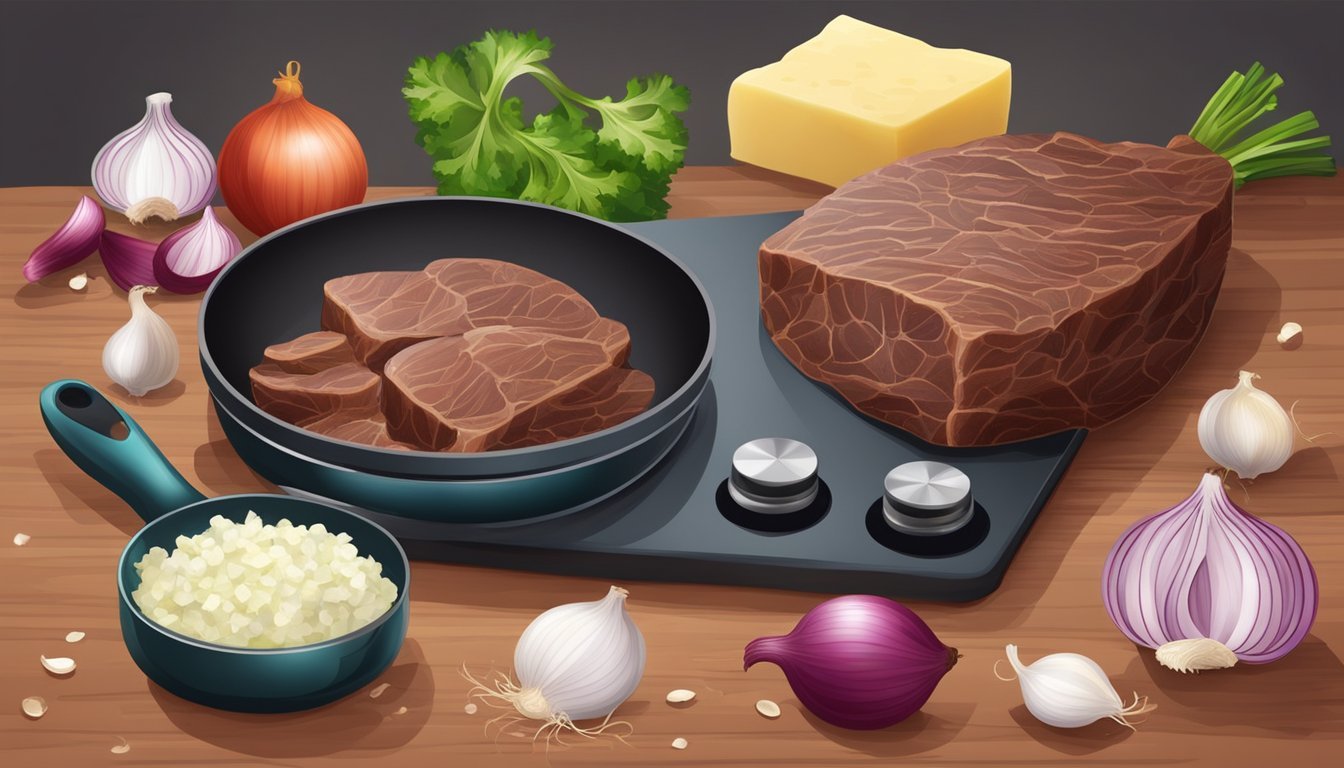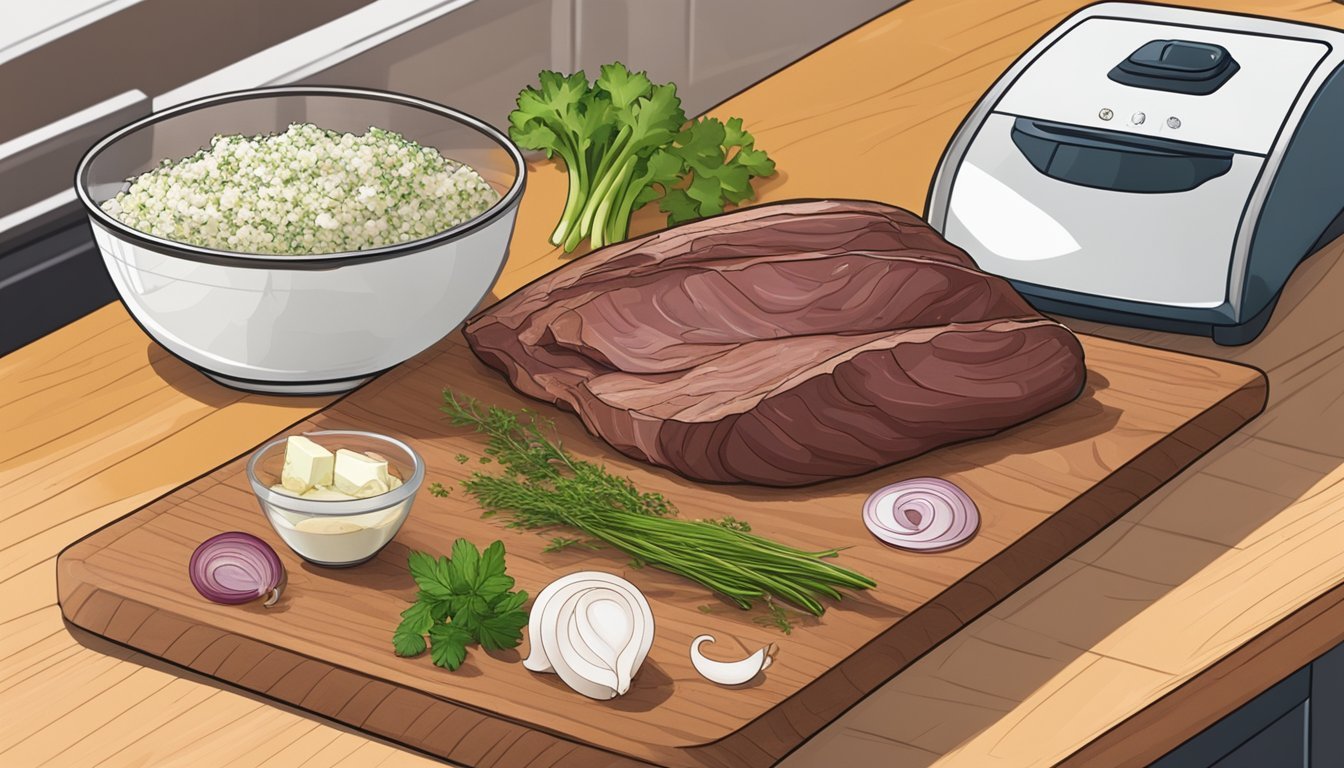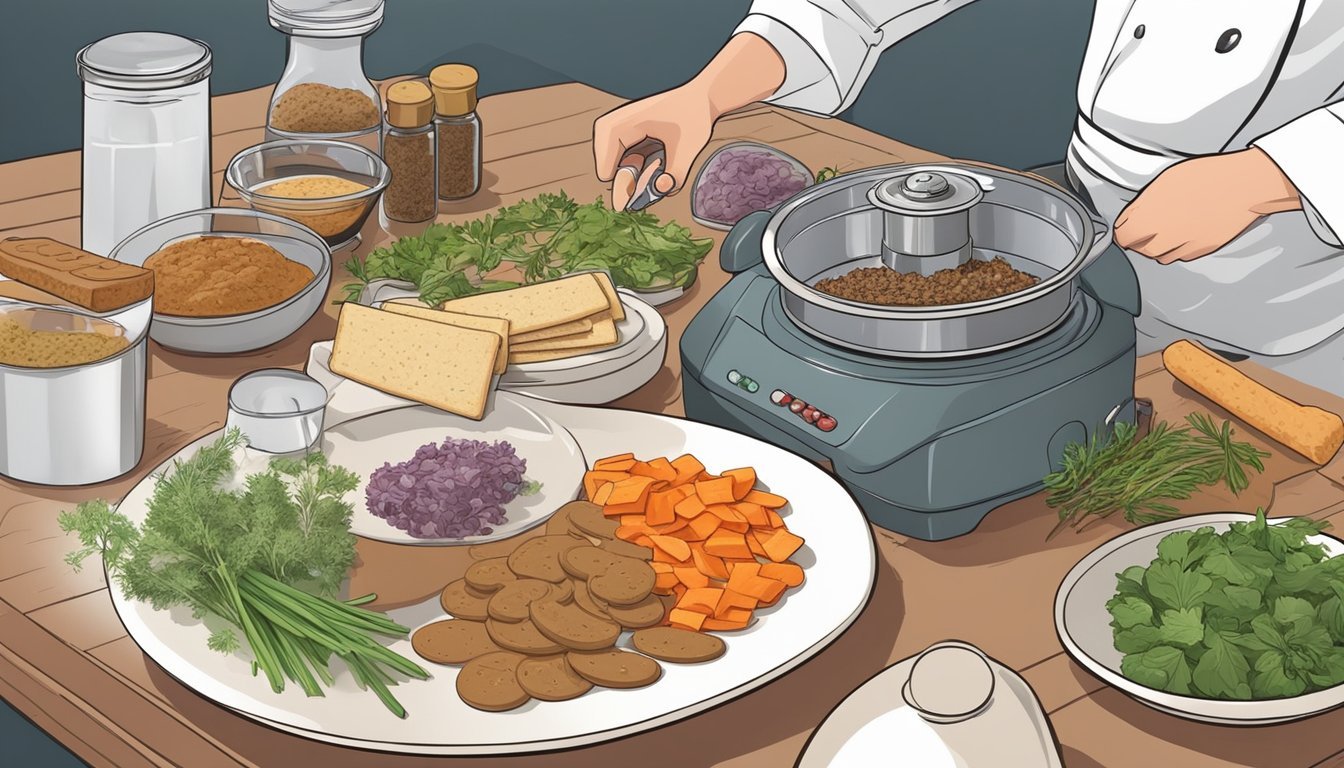How to Make Carnivore Diet-Friendly Liver Pâté
A Step-by-Step Guide
Liver pâté is a nutrient-dense option for those following a carnivore diet, which emphasizes consumption of animal products and excludes plant-based foods. This pâté, made primarily from organ meat, provides a rich source of vitamins and minerals, aligning well with the carnivore ethos of focusing on high-nutrient foods. Organ meats like liver are often considered superfoods due to their high concentration of essential nutrients.
Creating a carnivore diet-friendly liver pate involves selecting the right type of liver—beef, chicken, or lamb—and minimal seasonings, as the diet restricts spices derived from plants. The preparation of liver pâté is straightforward, usually requiring the liver to be cooked until just done, avoiding overcooking to retain the organ meat's tenderness and moisture.
Carnivore diet recipes for liver pâté commonly include other animal-based ingredients such as butter or ghee for sautéing and a creamy texture, and sometimes, bacon (how long does bacon last?) for enhanced flavor. This simplicity showcases the natural taste of liver, allowing the organ meat's nutritional benefits to shine, and providing those on the carnivore diet with a savory, healthful addition to their meal rotation.
Understanding the Carnivore Diet
The carnivore diet is a high-protein, low-carbohydrate diet that emphasizes the consumption of animal products and the elimination of plant-based foods. This section provides insights into the foundational principles and potential health benefits associated with this dietary approach.
Principles of the Carnivore Diet
The core tenet of the carnivore diet is straightforward: consume only animal-based foods and exclude all plant matter. This includes meat, fish, eggs, and some forms of dairy. Individuals following this diet often prioritize foods high in protein and fat while minimizing carbohydrate intake. A characteristic table summarizing the diet is as follows:
Meats: Yes
Dairy: Yes (No plant-based dairy)
Eggs: Yes
Fruits: No
Vegetables: No
Seeds & Nuts: No
Grains: No
Legumes: No
Health Benefits of Carnivore Eating
Adopting a carnivore diet can lead to several health benefits, often attributed to its low-carbohydrate structure which bears similarity to ketogenic diets. These benefits may include but are not limited to:
Weight Loss: Reducing carbohydrate intake can lead to a state of ketosis, where the body becomes efficient at burning fat for energy, potentially resulting in weight loss.
Simplicity in Nutrition: A limited food selection simplifies meal planning and may reduce the decision fatigue associated with dieting.
Nutrient Density: Animal products, especially organ meats like liver, are rich in essential nutrients that are crucial for body functions.
Individuals may experience improvements in blood sugar levels and inflammatory markers, although it should be noted that results can vary. As with any diet, one should consider personal health conditions and consult with a healthcare professional before making significant dietary changes.
The Importance of Organ Meats
Organ meats, particularly liver, are highly nutritious components of the carnivore diet. These meats are dense sources of essential vitamins and minerals which play critical roles in various bodily functions.
Nutritional Profile of Liver
Liver is one of the most nutrient-dense foods one can consume. It's an excellent source of high-quality protein and is rich in vitamins A, B12, and folate. The mineral content is also impressive, offering high levels of iron and copper, among others. This makes liver an essential part of the diet to support overall health, metabolic functions, and energy levels.
Vitamins: A, B12, D, E, and K
Minerals: Iron, copper, zinc, phosphorus
Other Nutrients: Choline, Coenzyme Q10
Comparing Beef Liver vs. Chicken Liver
When considering beef liver versus chicken liver, both stand out for their nutrient content, but there are differences. Beef liver tends to have higher levels of Vitamin A and iron, while chicken liver provides more Vitamin B12. The choice between the two may depend on individual nutritional needs or culinary preferences.
Beef Liver:
Higher in Vitamin A and iron
Often described as having a stronger flavor
Chicken Liver:
Higher in Vitamin B12
Generally has a milder taste than beef liver
Sourcing Quality Organ Meats
To obtain the maximum benefit from organ meats, sourcing from high-quality providers is key. Look for grass-fed and pasture-raised options as these are likely to have a better nutrient profile and are typically more ethically raised. Besides local butchers and markets, ancestral supplements can be a convenient option, as they provide desiccated organ meats sourced from high-quality producers.
Where to Buy Liver:
Local butchers
Farmer's markets
Online specialty stores
Ancestral supplement providers
Purchasing from reputable sources ensures that the liver and other organ meats are not only nutritious but also safe and ethically procured.
Essential Ingredients for Liver Pâté
When preparing liver pâté for the carnivore diet, selecting high-quality liver and complementing it with the right ingredients is crucial to enhance both flavor and texture.
Selecting the Right Liver Type
The foundation of any pâté is the liver itself. For the carnivore diet, one can choose from beef liver, chicken liver, or pork liver. Beef liver is nutrient-dense, providing a rich flavor profile that is hearty and distinctive. Chicken liver, in contrast, offers a milder taste and smoother texture. Pork liver can also be used but is less common. It is essential to select fresh, preferably organic liver to ensure the best taste and nutrient content.
Additional Ingredients for Flavor and Texture
Additional ingredients are sparingly used in a carnivore diet-friendly pâté, focusing on animal-based products. Key ingredients include:
Fats: To create a creamy texture, butter or ghee is integral. It also helps to blend the flavors together harmoniously.
Bacon: Adds a smoky, savory element to the pâté. Fry bacon until golden and integrate into the mixture for depth of flavor.
For those who include dairy:
Cream or cheese can be incorporated for additional richness and smoothness.
And for subtler flavoring agents:
Small amounts of onions and garlic can be sautéed and mixed into the pâté for those who include them in their version of the carnivore diet.
Herbs and spices:
Traditional herbs like rosemary, thyme, and sage may be used sparingly, according to personal dietary choices and preferences.
When crafting a carnivore diet-friendly liver pâté, the emphasis is placed on simplicity and the natural flavors of the ingredients. Each chosen component serves a specific purpose to enrich the final product's texture and taste.
Preparing the Liver
Before starting with liver pâté preparation, one must focus on properly cleansing and slicing the liver, as well as selecting the right cooking techniques. These initial steps are crucial to ensure the texture and flavor are optimal for pâté.
Cleansing and Slicing Strategies
When preparing the liver, it should first be cleansed thoroughly under cold water to remove any impurities. Pat the liver dry with paper towels before proceeding with slicing. For consistency in cooking, the liver should be sliced into thin, uniform pieces, approximately 0.5 cm or 1/4 inch in thickness. This ensures that the liver cooks evenly and quickly.
Cooking Techniques for Liver
In a frying pan, select a suitable cooking fat such as coconut oil, ghee, or tallow for their high smoke points and compatibility with the carnivore diet. Heat the chosen fat on a high setting until it's hot enough to sizzle a drop of water. Place the liver slices in a single layer in the pan without overcrowding to allow each slice to cook properly. The liver should be cooked swiftly, for around 30 seconds on each side, until the slices are just cooked through but not overdone to avoid a tough texture.
Skip the lines and order your frying pan, ghee, or tallow online for a stress-free shopping experience!
Assembling the Liver Pâté
Once the liver is cooked to just the right point, the next critical stage is blending it into a smooth pâté. This requires careful attention to texture and the incorporation of fats for creaminess, which will satisfy both carnivore and keto diet preferences.
Blending for Smoothness
For the finest texture, one must utilize a food processor. After carefully cooking the liver, it should be transferred into the food processor while still warm. Processing it in batches, if necessary, ensures a uniform consistency.
Step 1: Place the cooked liver in the food processor.
Step 2: Pulse until the liver starts to break down into smaller pieces.
Step 3: Process continuously until the mixture becomes smooth and homogenous.
One should check the mixture periodically, scraping down the sides of the bowl to ensure that all pieces are finely processed.
I always prefer buying food processor online because of the added convenience!
Enhancing with Dairy or Dairy-Free Alternatives
Adding fat is indispensable for achieving the creamy texture of traditional pâté. While butter is a common addition, those adhering to a strict carnivore diet might opt for animal-based alternatives such as ghee, which is clarified butter with milk solids removed.
For Dairy-Enhanced Pâté:
Option 1: Incorporate cold, diced butter into the liver mixture while blending.
Option 2: Add heavy cream gradually until the desired texture is achieved.
For a dairy-free version, one can use alternatives like coconut oil or animal fats that align with both carnivore and keto diet frameworks. These fats should be room temperature or slightly softened for ease of blending.
For Dairy-Free Pâté:
Blend in ghee or a preferred animal fat until the pâté reaches a creamy consistency.
In both cases, one should add the fats gradually during the blending process, checking the texture frequently to prevent the pâté from becoming too loose.
Perfecting the Flavor
Crafting a delectable Carnivore Diet-friendly liver pâté hinges on striking the right balance with spices and incorporating rich umami flavors. Utilizing the appropriate seasonings can transform the liver into an exquisite and palatable delicacy.
Balancing Spices and Seasonings
The key to enhancing the flavor of liver pâté is the judicial use of spices and seasonings. A simple yet effective combination might include:
Sea Salt: A pinch to bring out the natural flavors.
Black Pepper: Freshly ground for a piquant edge.
Bacon can also be integrated for its salty and smoky nuances. It infuses the pâté with a depth that complements the robust nature of the liver.
Online shopping for sea salt and black pepper is the smart choice for a seamless transaction!
Incorporating Umami Elements
Umami components add a level of savoriness that is essential in meat-based dishes.
Anchovies: (What wine goes well with anchovies?) These can be finely chopped or mashed into a paste, providing a salty and umami boost.
Bacon: Not only does bacon contribute saltiness and fat, but it also imparts a satisfying umami taste.
The introduction of umami-rich elements ensures a rounded flavor profile that elevates the overall taste of the pâté.
Serving and Storing
When preparing liver pâté for a carnivore diet, it's essential to consider both appealing serving options and proper storage methods to maintain freshness. The right presentation can elevate this nutrient-dense appetizer, while correct storage ensures it remains flavorful and safe to consume.
Creative Serving Suggestions
Liver pâté can be served as an appetizer or incorporated into breakfast, lunch (What wine goes well with lunch?), or dinner. Here are specific serving ideas to enrich your meals:
Breakfast: Pair with fried eggs for a protein-rich start to the day.
Lunch: Serve atop slices of cucumber for a refreshing and satisfying midday meal.
Dinner: As an entree, offer the pâté with other meats for a diverse carnivorous feast.
Proper Storage for Freshness
To ensure the liver pâté maintains its quality, adhere to these storage guidelines:
Refrigerate: Always store liver pâté in the refrigerator immediately after preparation and cooling.
Air-Tight Container: Place the pâté in an air-tight container or wrap it tightly in plastic wrap to protect against contaminants.
Consumption Window: For optimal freshness, consume liver pâté within 3-5 days from refrigeration.
Freezing: If you need to keep the pâté longer, it can be frozen for up to 3 months. Thaw in the refrigerator before serving.
Diet Integration and Variations
Liver pâté is a nutrient-dense addition to a carnivore or keto diet, providing a rich source of vitamins and minerals. This section will explore practical ways to incorporate liver pâté into meals and discuss variations to accommodate different dietary needs.
Incorporating Liver Pâté into Daily Meals
Liver pâté can be smoothly incorporated into one's carnivore or keto diet plan. For beginners looking to boost their nutrient intake, liver pâté can serve as a savory spread on low-carb vegetables like cucumber slices or as a dip with pork rinds. Those accustomed to the carnivore diet might enjoy it as a topping on seared steaks or mixed with eggs for a hearty breakfast.
Breakfast: Spread liver pâté on an omelet or scrambled eggs.
Lunch/Dinner: Use as a condiment for grass-fed meats.
Recipe Variations for Dietary Restrictions
For those with specific dietary restrictions, liver pâté recipes can be tailored to meet their needs while remaining within the framework of keto or carnivore diet recipes. Utilizing grass-fed liver provides a higher quality of nutrients and supports ethical sourcing. Recipes can also be adapted for hidden liver recipes, discreetly increasing liver intake for those who are not fond of its taste.
Grass-fed Liver Pâté: Substitute with grass-fed beef or chicken liver for higher omega-3 and vitamin content.
Dairy-Free Option: Replace butter or ghee with animal fats like tallow for those avoiding dairy.
By following these guidelines, individuals on a carnivore or keto diet can enhance their meals with liver pâté while adhering to their dietary restrictions and taste preferences.
Additional Tips for Carnivore Diet Enthusiasts
When embracing the carnivore diet, one should prioritize meat quality and the transition process to maintain a healthy and sustainable lifestyle.
Selecting Meats and Fats for Optimal Health
For individuals following the carnivore diet, it's paramount to select meats and fats that align with their health goals. Focusing on grass-fed beef and organic meats can provide higher levels of omega-3 fatty acids and other nutrients than their grain-fed counterparts. When choosing fats, one should opt for tallow or ghee due to their high smoke points and nutrient profiles, making them ideal for cooking in the kitchen.
Meats: Seek out a variety of cuts such as steak, ground beef, and organ meats.
Fats: Utilize tallow and ghee for their health benefits and versatility in recipes.
Transitioning from a Standard to a Carnivore Diet
Transitioning to a carnivore diet requires gradual adjustments for the body to adapt. Starting with familiar meat-based items like meatballs or pemmican can ease the shift and make it more appealing. Incorporating bone broth can aid in digestion and provide essential nutrients during this dietary change. Those new to the diet should increase their meat intake incrementally to allow their system to adjust properly.
Key Transition Tactics:
Start with Familiar Foods: Transition with foods you enjoy like steak or ground beef.
Introduce Variety Gradually: Incorporate different meats over time to broaden your nutrient intake.
Utilize Bone Broth: Sip on bone broth for hydration and nutrients.
By carefully selecting meats and fats and strategically transitioning to the carnivore lifestyle, individuals can optimize their health while enjoying the foods they eat.










